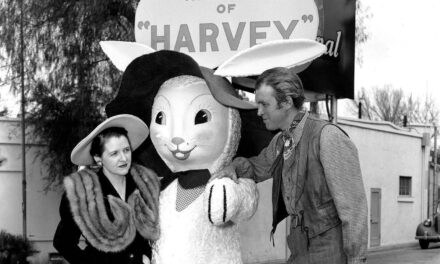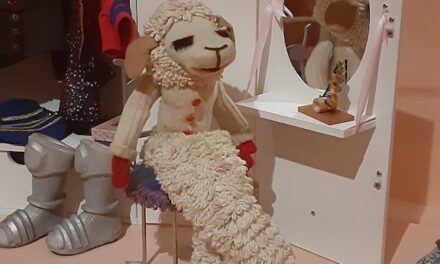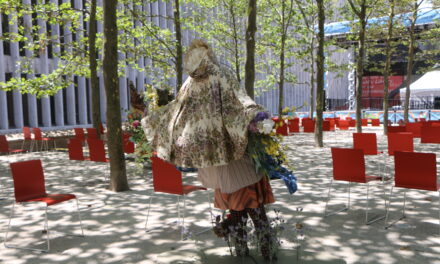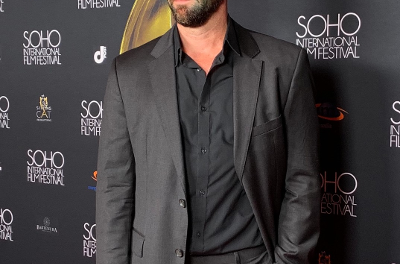American Musical Genius and… Painter
By Marilyn Lester. . .
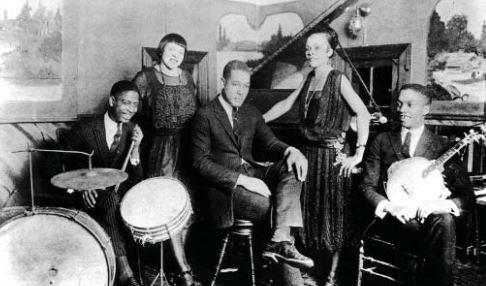
Recently, in August, legendary jazz and pop singer Tony Bennett celebrated his 94th birthday. And while his fame as a performing artist is widely known, Bennett has a lesser-known other identity––as a fine artist. His works, under his birth name, Anthony Benedetto, are in art collections and institutions worldwide. Bennett owes this career to another man, Duke Ellington, who also led two similar creative lives––as a world-renowned composer, pianist and bandleader and as a painter. (Click this link to hear Bennett speak about Duke’s influence in his life.)
Not many people are aware that Ellington, this great American genius, who wrote almost 3,000 musical works in many genres over a career that spanned 60 years, might well have had a career as an artist instead of in music.
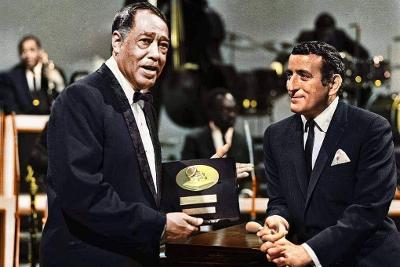

Young Duke Ellington entered into a comfortable middle-class life at his birth (April 29, 1899) in Washington, DC, christened Edward Kennedy Ellington (Kennedy was his mother’s maiden name). Within the confines of racial segregation, Ellington’s family prospered. His mother, Daisy, had completed high school, rare for a black woman at the time. His father, James Edward worked as a butler for a prominent white physician and was occasionally requested to assist at the White House for special catered events. Both played the piano. Until his only sibling, Ruth, was born in 1915, Ellington was a doted upon son whose mother encouraged him to greatness. He was always impeccably dressed and it was this deportment that earned him the regal nickname of “Duke,” but by whom… that depends on who’s telling the tale. Duke himself, very capable of being wry and sometimes a tease, gave a few versions of the story.
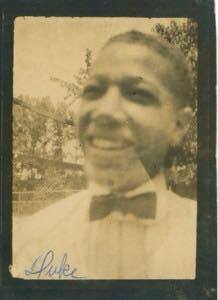

At age seven he began piano lessons, but found his love of baseball more compelling, especially, as he reported, when President Teddy Roosevelt would ride by on his horse and stop to talk to the boys. And so Duke stopped piano instruction––his heart not in it. It was also at this time that his artistic abilities began to seriously manifest. In 1913, when it became time for high school, he chose the Armstrong Manual Training School to pursue a career in commercial art. Duke was never one for book learning, preferring to educate himself through his own pursuits. But even though it seemed art was on the ascendent, music was never far away as an interest and opportunity. A few more forces in Duke’s life also came into play at this time. He’d met New Jersey pianist Harvey Brooks on a family trip to the Jersey shore and was impressed by him. Back in Washington, the very precocious Duke also began sneaking into pool halls where he could hear piano music being played. He resumed his piano lessons. This time he was eager, having been motivated by his observation that it was always the piano player who got the girls.
Ellington was ever a willing and hard worker. In 1913 another event shaped his life; he took a job as a soda jerk at the Poodle Dog Cafe on Georgia Avenue. When the piano player there was incapacitated by his love of the bottle, Ellington’s boss would have him take over at the keys. Noodling around, he composed his first work, the “Soda Fountain Rag,” followed by “What You Gonna Do When the Bed Breaks Down?” While studying art by day, he began to play at teenage gatherings and dances, soon gaining a reputation that made him exceedingly popular. This sideline to his education became a significant factor in Ellington’s life direction. Dancing became so popular in Washington that dance halls abounded. Duke sought out Washington band leaders for direction. Oliver “Doc” Perry, taught him how to read music. Ellington soon began filling in for Perry and other musicians in clubs and cafes.
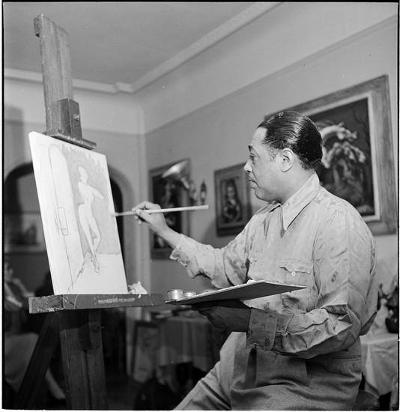

In 1916, Ellington won a poster contest sponsored by the NAACP and was deemed so talented to be offered a scholarship by Brooklyn’s Pratt Institute of Applied Arts. But in February 1917, three months before graduating from Armstrong High, he dropped out to begin his career as a professional musician. To earn money, he established a sign-painting business, working at his art by day and building his other career by night. When the US entered World War I, Duke registered for the draft and got a job as a messenger at the Navy Department. Due to the war, there was an influx of government visitors in the nation’s capital which, in turn, created a surge of social activities––and work for Washington musicians.
Ellington saw opportunity and he was learning to become a businessman. In early 1918 he formed his own group, The Duke’s Serenaders. Through business savvy and commitment, he began to book jobs further into the white community, at embassies, private mansions and Virginia society balls. Throughout, though, he still maintained his sign painting business. When customers came to him to create an advertisement for a dance, he would ask them if they needed a band and, likewise, when someone wanted to hire a band for a dance, he would ask them if they needed a sign painter. He also continued his musical studies. Twice a week he went to the prominent Washington musician, Henry Grant (founder of the National Association of Negro Musicians, among other accomplishments) for lessons in harmony and additional studies in reading music.


Ellington’s reputation and popularity continued to grow, especially between 1920 and 1923, with Duke forcefully seeking to better his musical skills and leadership abilities. In 1923, Ellington and a few of his band members decided to crack the New York market. The effort was not an immediate success, but by the end of the year, through persistence, Ellington was beginning to establish himself and his band as a leading force in New York City’s jazz scene. He went from strength to strength musically, becoming the house band at the fabled Cotton Club in 1927, cementing his fame and path to greatness.
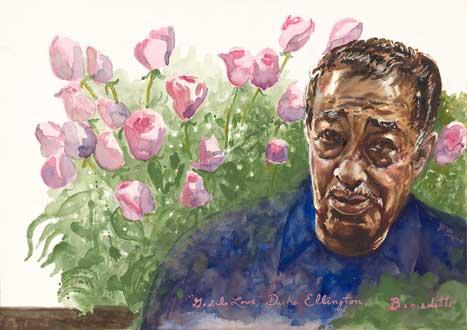

In an interview, Ellington once said it was easier to write music in the back of a taxicab than it was to paint. Yet he continued to paint for pleasure his life-long. He believed in having more than one creative pursuit, and that is the advice he gave Tony Bennett. Asked about the source of his creativity, he said, “Ideas? Oh, man, I’ve got a million dreams. That’s all I do is dream, all the time.” Duke Ellington was in constant motion. Of this he remarked, “”What do people do who rest?” There’s no telling what heights Duke would have achieved had he pursued a career as a visual artist. But we do know that this towering individual, whose astounding genius goes beyond music, left behind a creative legacy “beyond category.”



